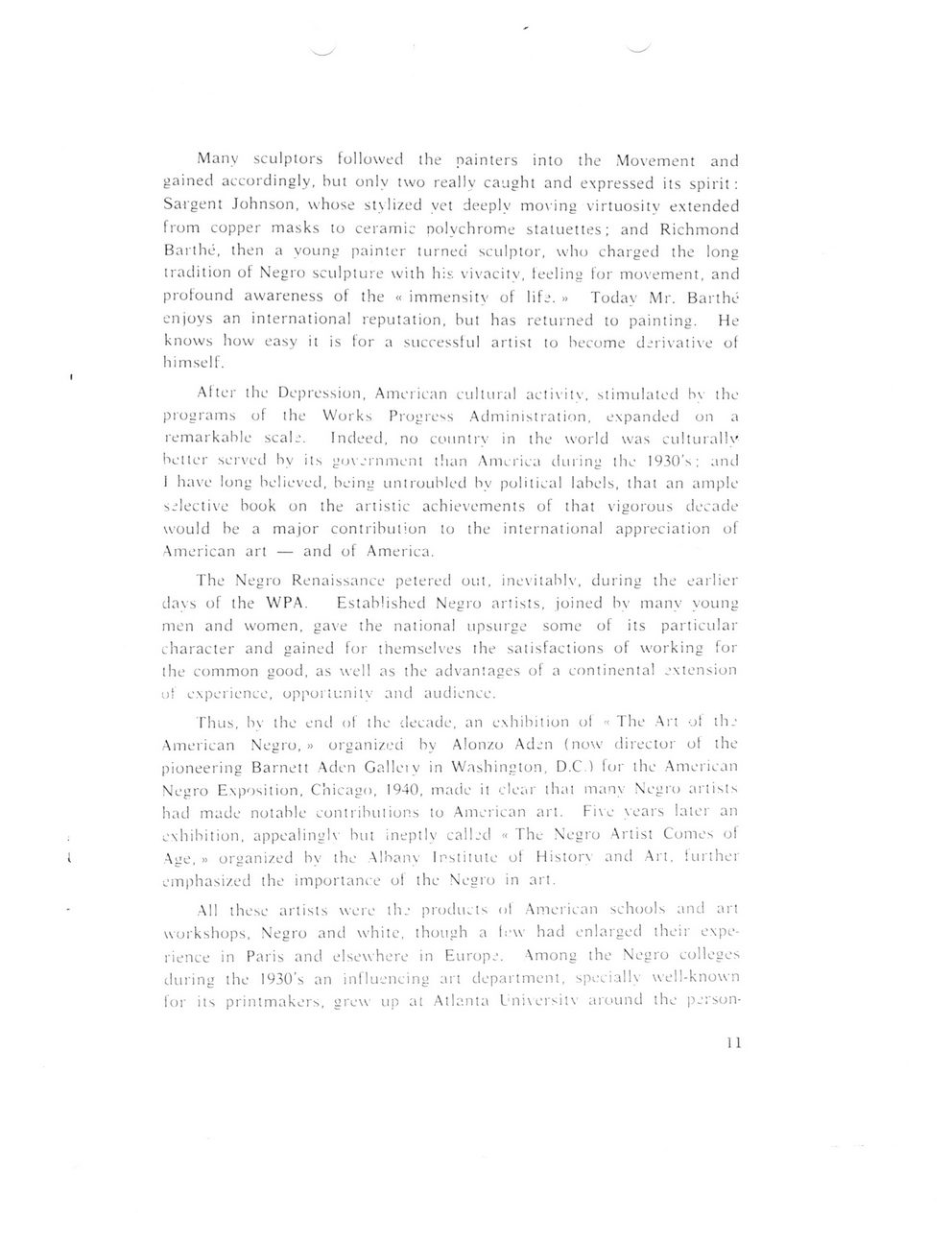This text was obtained via automated optical character recognition.
It has not been edited and may therefore contain several errors.
Many sculptors followed the painters into the Movement and gained accordingly, hut only two really caught and expressed its spirit : Sargent Johnson, whose stylized vet deeply moving virtuosity extended from copper masks to ceramic polychrome statuettes; and Richmond Barthe, then a young painter turned sculptor, who charged the long tradition of Negro sculpture with his vivacitv, feeling for movement, and profound awareness of the ? immensity of life?. -> Today Mr. Barthe enjoys an international reputation, but has returned to painting. He knows how easy it is for a successful artist to become derivative of himself. Alter the Depression, American cultural activity, stimulated hv the programs of the Works Progress Administration, expanded on a remarkable seal.'. Indeed, no country in the world was culturally better served bv its government than America during the 1930 s: and I have long believed, being untroubled by political labels, that an ample selective book on the artistic achievements of that vigorous decade would be a major contribution to the international appreciation of American art ? and of America. The Negro Renaissance petered out, inevitably, during the earlier davs of the WPA. Established Negro artists, joined by many young men and women, gave the national upsurge some of its particular character and gained for themselves the satisfactions of working for the common good, as well as the advantages of a continental extension of experience, opportunity and audience. Thus, by the end of the decade, an exhibition ol ? The Art ol the American Negro, ? organized by Alonzo Aden (now director ol the pioneering Barnett Aden Galleiv in Washington, D.C.) for the American Negro Exposition, Chicago, 1940, made it clear that many Negro artists had made notable contributions to American art. Five years later an exhibition, appealingly but ineptlv called ? The Negro Artist Comes of Al'c, ? organized bv the Albany Institute ol History and Art, further emphasized the importance ol the Negro in art. All these artists were the products ol American schools and art workshops, Negro and white, though a lew had enlarged their experience in Paris and elsewhere in Europe. Among the Negro colleges during the 1930's an influencing art department, specially well-known for its printmakers, grew up at Atlanta L'nixersitv around the person- 11

Barthe, Richmond American-Negro-Art-10